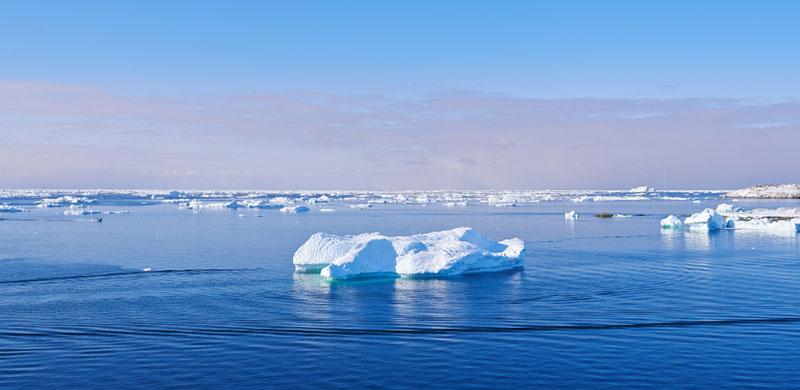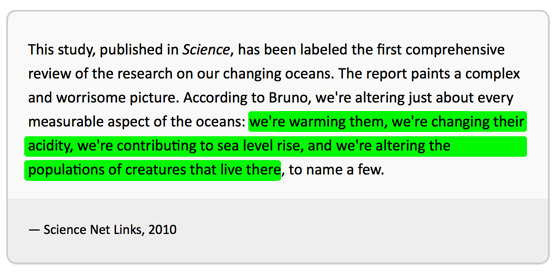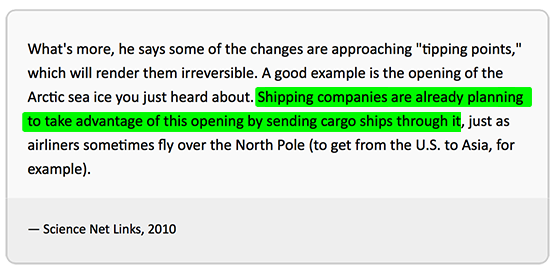Learn It Part 2
Now let’s look at an example to learn more about citing evidence. First take a moment to read through the Science Net Links article, Changing Oceans Opens a new window. Read the Transcript and Making Sense of the Research sections. You do NOT have to answers the questions at the bottom of the article.
In the beginning of the article, the transcript states the idea that “Climate change is transforming the world’s oceans.”

Climate change is warming our oceans, causing Arctic sea ice to melt.
What evidence in the excerpt below does the author provide to support this idea?
This study, published in Science, has been labeled the first comprehensive review of the research on our changing oceans. The report paints a complex and worrisome picture. According to Bruno, we're altering just about every measurable aspect of the oceans: we're warming them, we're changing their acidity, we're contributing to sea level rise, and we're altering the populations of creatures that live there, to name a few.
— Science Net Links, 2010
Click Show Answer to see the highlighted evidence.
The idea that climate change is affecting the oceans is stated directly in the text along with the supporting evidence we identified above. But some ideas, which may not be stated directly, can be inferred from the text and can be supported with evidence.
Read the following excerpt from the article. Can you find evidence to support the inference that the effect of climate change on the oceans may provide benefits for the transportation of goods?
What's more, he says some of the changes are approaching "tipping points," which will render them irreversible. A good example is the opening of the Arctic sea ice you just heard about. Shipping companies are already planning to take advantage of this opening by sending cargo ships through it, just as airliners sometimes fly over the North Pole (to get from the U.S. to Asia, for example).
— Science Net Links, 2010
Click Show Answer to see the highlighted evidence.
Now that you have seen how to cite evidence for ideas that are stated directly and for inferences, go to the next page to practice this skill on your own.










